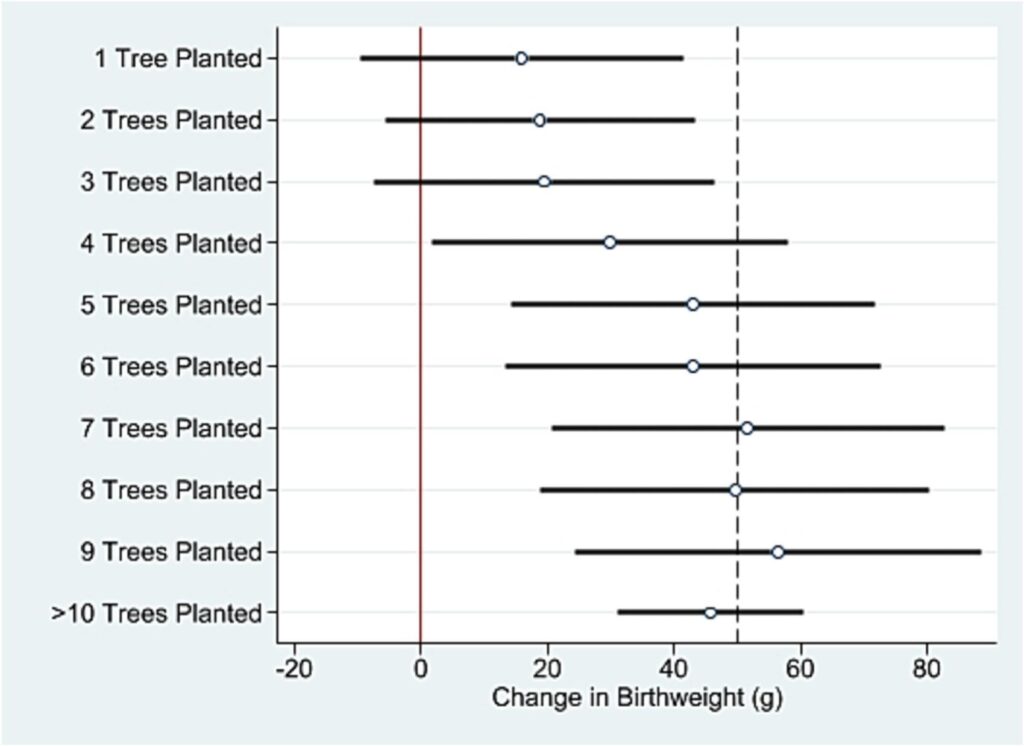Greener Streets, Healthier Beginnings
Planting trees in proximity to pregnant people’s homes is associated with improved birth outcomes, including higher birthweight.

Read Time: 2 minutes
Published:
What if the next big breakthrough in maternal health isn’t in a hospital or lab, but growing quietly outside your front door? A new study suggests that planting trees near pregnant people’s homes can improve birth outcomes, offering a hopeful reminder that nature can be a powerful public health ally.
Conducted by Geoffrey Donovan and colleagues from the USDA Forest Service and Drexel University, the study examined the association between planting trees and birth outcomes. Unlike earlier studies that measured access to green space by proximity, this research used a more targeted metric—the number of trees planted by the nonprofit Friends of Trees within one mile of a family’s home during the decade before a child’s birth. Controlling for race, education, BMI, and existing tree canopy, they analyzed data from over 36,000 births in Portland, Oregon, between 2015 and 2020.

Every additional tree planted within 100 meters of a maternal address was linked to a 2.3-gram increase in birthweight. The association became statistically significant after at least four trees were planted and plateaued at around 10, corresponding to an average gain of 50 grams (about 2 ounces).
The difference may seem small. But at the population level, a 50-gram increase in birthweight could move many babies out of the low-birthweight category, defined as under 2,500 grams (5.5 pounds). Low birthweight is a key marker associated with higher risks of developmental delays and chronic illness later in life.
What explains this connection between tree proximity and healthier birthweights? The researchers hypothesized that the mechanisms linking trees and improved birth outcomes include reduced stress, improved air quality, and increased physical activity. Trees regulate carbon dioxide levels and cool urban environments. They are also directly linked to a reduction in stress, as well as a lower risk of depression and its symptoms.
Planting trees is a cost-effective, scalable, and sustainable intervention with multiple benefits. Focusing efforts on neighborhoods with poor birth outcomes and low amounts of green space could help reduce health gaps. In a world of complex public health challenges, the humble street tree offers a hopeful reminder: sometimes, the path to a healthier, greener beginning lies right outside your front door.



